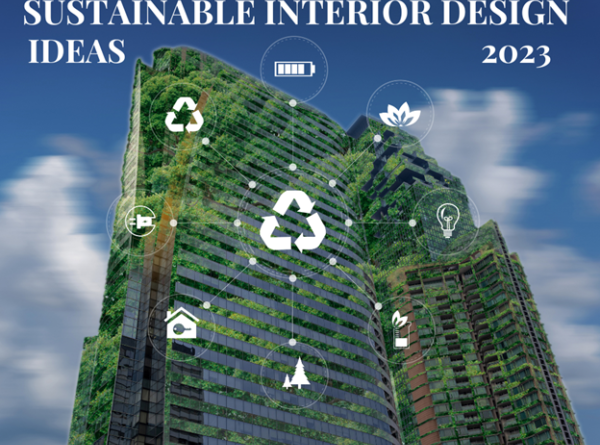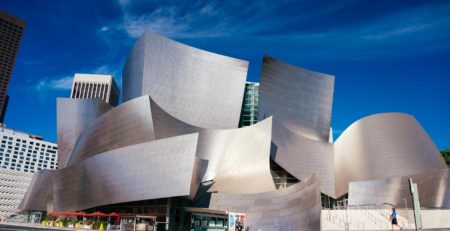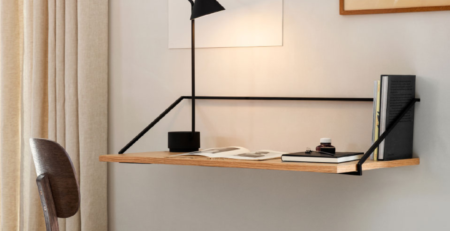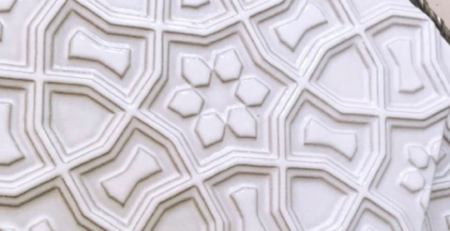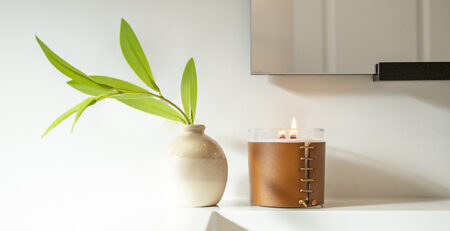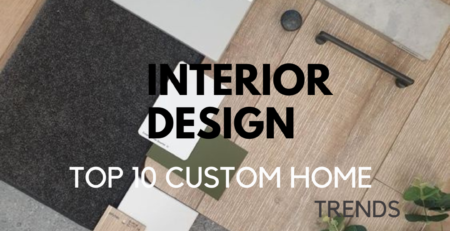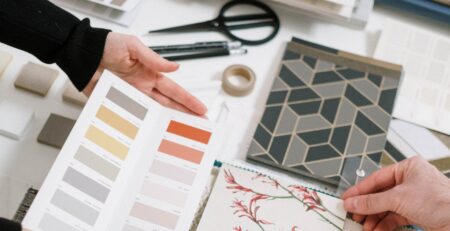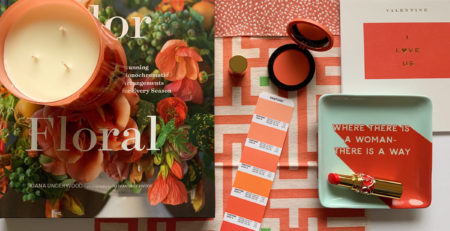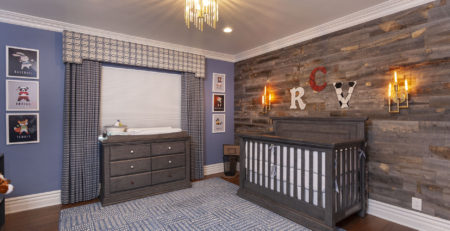Sustainable Interior Design Ideas With Eco-Friendly Materials For 2023
With technological advancement and industrialization in recent years, the rapid population growth and irresponsible utilization have caused a horrendous decline in natural resources. The alarming situation awakened many authoritative people from the slumber of insensitivity. Amongst the efforts made by executive bodies, the ideology of architects and interior designers was particularly appreciated.
They proposed the idea of a sustainable and eco-friendly interior made with biodegradable and non-toxic materials. Moreover, many communities initiated campaigns with the labels; GO GREEN. Here we are summarizing the sustainable interior design, eco-friendly building materials, finishes, and paints and highlighting their significance in today’s world.
What Is Meant By Sustainability In Interior Design?
Sustainability in interior design and architecture refers to building infrastructure out of eco-friendly materials capable of reducing negative environmental impacts, limiting the use of non-renewable resources, and giving an aesthetic appeal to establishments. Moreover, going GREEN does not only mean conserving and utilizing water and solar energy; it also refers to considering every aspect of your home’s furnishings for sustainability.
The Importance of Sustainable Interior Design
Whether considering outdoor or indoor infrastructure, it influences the environment. Therefore, its the designers’ and owners’ responsibility to opt for environment-friendly materials. It also includes taking necessary preventive measures to improve air quality and acoustics and maintaining proper ventilation and optimal temperature of the planet.
Moreover, the sustainable interior design uses low-emitting materials and natural ways to filter air rather than HVAC systems to prevent indoor air pollution. For this very purpose, indoor plants and natural fibers that are germ-trappers are encouraged to employ in home furnishings.
What Are Eco-Friendly Materials To Build Infrastructure?
The following are the eco-friendly materials encouraged to employ in building infrastructure as a part of sustainable interior design.
Bio-Glass
Bioglass is also bioactive glass made of silicon oxide, silicon dioxide, phosphorus pentoxide, and calcium oxide. It is a glass-ceramic material with numerous applications due to human compatibility and safety. In architecture and interior design, bioglass makes surface slabs and countertops in kitchens, bathrooms, sinks, and flooring. This material has a satin-like luster and a seamless feel that is best for building home infrastructure. Moreover, it offers excellent UV and fire resistance but only average weather resistance.
Also, there are no potentially dangerous components in bioglass. Materials made of Bio-Glass are inert with no known harmful byproducts released during burning.
Scrap Metal
Scrap metal comprises used metals like aluminum, zinc, iron, steel, alloys, and precious metals that can be recycled and reused. In addition to successfully bringing art and design into your home, recycled aluminum has a higher sustainability rating than other options. Compared to non-renewable materials, reclaimed plastic and metal fixtures take less labor and energy than furnishings constructed. Furthermore, metals may be repurposed numerous times without losing their qualities.
Cork
Flooring made of cork has existed for decades; however, it became the trend with the popularity of the green interior design. Contrary to what this material initially gives off, cork flooring is intended to look and feel the same as hardwood flooring. Only the tree’s bark is collected during the cork extraction, making them a sustainable product. Cork can also be recycled indefinitely. In addition, some of the flooring constructed with this substance is composed entirely of used wine corks.
Bamboo
Due to its rapid growth, requiring only four years compared to hardwood development, and its potential to lessen deforestation, bamboo is a preferred choice for sustainable architectural spaces. This tropically grown grass can thrive in various weather patterns and is largely unaffected by temperature fluctuations and environmental conditions.
Although bamboo is a beautiful, renewable resource to be utilized in your home interior, its popularity is due to more factors than its sustainability. Moreover, bamboo gives an aesthetically beautiful appeal to your home adornment and an exquisite neutral tone that refreshes mood and breath. From an ecological perspective, it is even more desirable because it needs very little in the way of herbicides or fertilizers.
Reclaimed Wood
At first, wooden furnishing is not a sustainable option because it necessitates the destruction of living trees. Reclaimed wood, however, breathes new life into ancient materials while recycling them. Reclaimed wood is an upcycled material from retired ships, old barns, warehouses, and stock farms. In green interior design, reclaimed wood is a popular choice. Excellent options include wooden plinths, recliners, and dining tables. Moreover, it is a fantastic alternative for flooring, particularly in a country setting.
Jute Fibers
Besides their appearance, jute fibers provide the space with a rustic feel. The jute plant, which develops swiftly and is therefore readily recyclable, provides a sturdy gritty texture. As a result, carpets made of jute fiber can help create a more environmentally friendly house while still long-lasting. Rugs manufactured from the inexpensive fiber jute are also cost-effective because they are thermal heat insulators.
Recycled Plastic
Recycling plastic allows for the creation of both interior and exterior carpets to be created, providing non-biodegradable materials a second chance. High-density polyethylene is a prevalent type of recycled plastic. Furnishings made from compressed or thermoformed HDPE is solid and long-lasting because HDPE is hefty and thick. Because the material’s hues are consistent throughout its shelf life, it resists fading well.
What Eco-Friendly Paints, Finishes, Fuels, Lights, And Air-Filters Should We Use?
The paint or lacquer that gives base materials a minimal sheen also contributes to sustainability. You should look for finishes with lower grades of volatile compounds. VOCs, a component of several paints, evaporate at room temperature in an off-gassing process that can last several days. As a result, VOCs can harm kidneys, produce discomfort, e.g., nausea, headache, and pollute fresh air.
Along with VOCs, numerous coatings also incorporate biocides, insecticides, and dyes, all of which have adverse environmental effects. So opt for eco-friendly paints and furnishes. Popular paint brands are Clare Paint, Earth Pigments, BioShield, and ECOS Paints.
Bioethanol-fueled fireplaces are an environmentally beneficial choice for interior design. This type of fuel is hydrophilic, non-toxic, and soon recyclable. Compared to gasoline, it emits much less carbon dioxide into the atmosphere. Moreover, people appreciating green interiors are replacing their lighting fixtures with LED bulbs at an increasing rate. Incandescent bulbs consume 75 percent more energy than LEDs that last 25 times longer.
Using materials to retain heat and light hues or reflective surfaces to adjust the amount of light in a home can significantly reduce the need for external electricity appliances for lighting and temperature control. Moreover, remember that plants naturally filter air and increases the amount of oxygen in your room. Therefore, you can plant indoor plants as the best natural air filters. Place them near windows with curtains made of cotton to ensure maximum light.
What Is The Best Green Interior Decor For 2023?
Scandinavian design is characterized by a minimalistic mindset emphasizing the naturalness of biological, earthly elements. You can reduce the number of objects in your home that require non-renewable materials by following Scandinavian interior design rules of green space and minimal essentials.
Following this interior decor, you should prefer using tiny jute rugs rather than synthetically treated carpets. A fireplace is also a common feature of Scandinavian design. Utilizing this natural source of heat throughout winter will reduce your energy consumption. Moreover, such an interior style demands a neutral color palette that ensures sunlight in brighter rooms.

